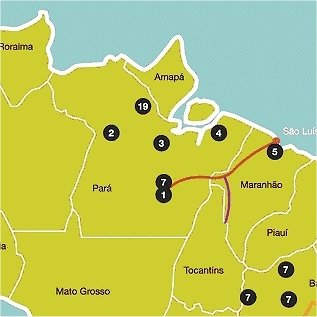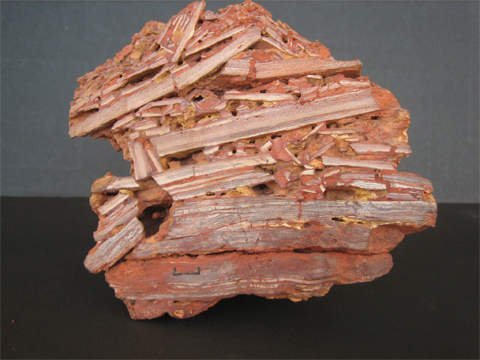The Paragominas bauxite mine is located in the east of the state of Pará in Northern Brazil, one of the world’s richest sources of bauxite.
Fully owned by Brazil’;s Vale (CVRD) the mine commenced operations in 2007 and currently boasts annual capacity of 5.4 million tons a year.
Around $196m will be invested in stage one of the mine’s expansion with a view to push production up to 9.9 million tons a year. This was to have been completed by April 2008, in line with the third expansion undertaken by majority-Vale-owned alumina manufacturer Alunorte. To date Vale has invested $352m in the plant.
In August 2008 Vale kicked off its $1.1bn expansion of the Paragominas refinery which is supposed to increase the plant’s output by almost 50% to 6.3 million tons a year, making it the second biggest refinery in the world.
“It’s a development which marks a new cycle of development for the state of Para,” said Vale president and director Roger Agnelli. The firm says the expansion has created 700 new jobs within the plant. Eventually more than half the plant’s bauxite supply will arrive along a 244km mineral duct running from the Paragominas mine. Alunorte’s minority shareholders are Norway’s Norsk Hydro and four Japanese firms.
Geology and reserves
Paragominas lies within the eastern Amazon region and the Maranhão Basin where it would seem to have been developed in late Tertiary and early Quaternary sediments. The bauxitic zone extends over at least 1,000km² with an average thickness 2.2 ±1m and estimated resources of more than 1Gt of bauxite. Reserves in 2004 were estimated at 878Mt (USGS).
The Palaeozoic tectonic regime in the continental interior of Brazil produced a series of large sedimentary basins, such as the Maranhão Basin. Reactivation in the Mesozoic and Cenozoic caused further uplift, resulting in substantial erosion of the Brazilian platform. The concomitant build-up of sediments in the low-lying area was extensive and continued into Quaternary time.
Bauxite from the Paragominas Mine has average content of 50% applicable alumina, 4% reactive silica, and a granulometry level below 65in with 12%-13% humidity.
Paragominas lies three degrees south of the equator with annual average rainfall of 1,700mm with a pronounced dry season from July to November.
Ore processing
The ore will be flushed with water along 244km pipe, which started operations in 2007 and is the only one of its kind in the alumina industry, Vale says.
Mining
The Paragominas mine utilises the strip mining technique. The mine also has an improvement plant with grinding facilities and a mineral ducts with a 244km extension to transport the bauxite in pulp form to Alunorte.
Production
The Paragominas bauxite mine currently has an annual capacity of 5.4 million tons. This is expected to increase to almost ten million tons after completion of the first mine expansion currently underway.





